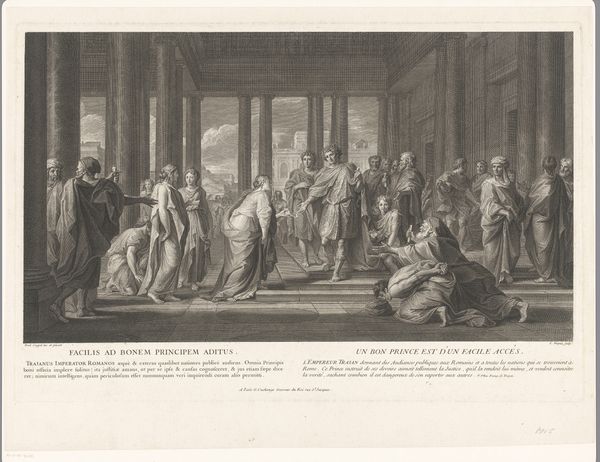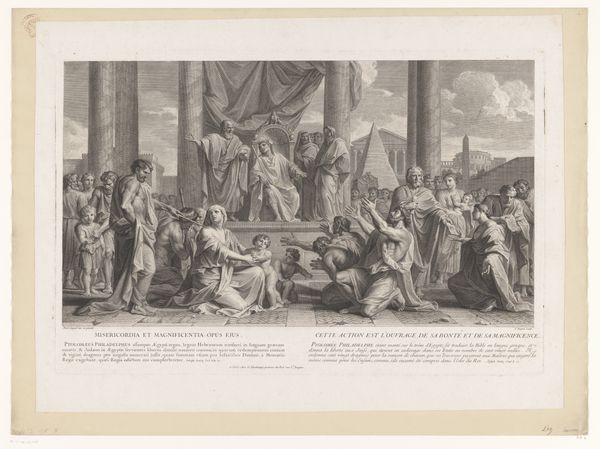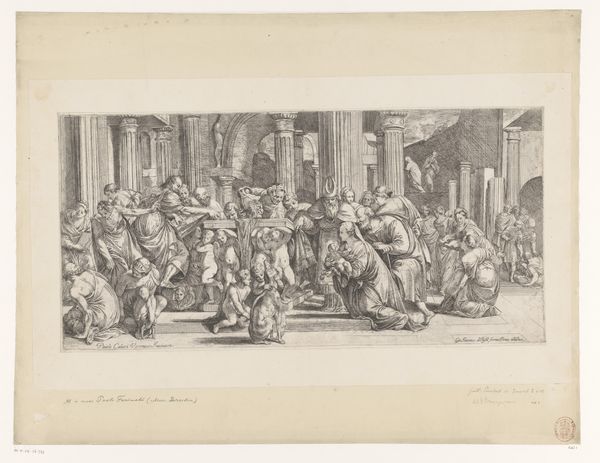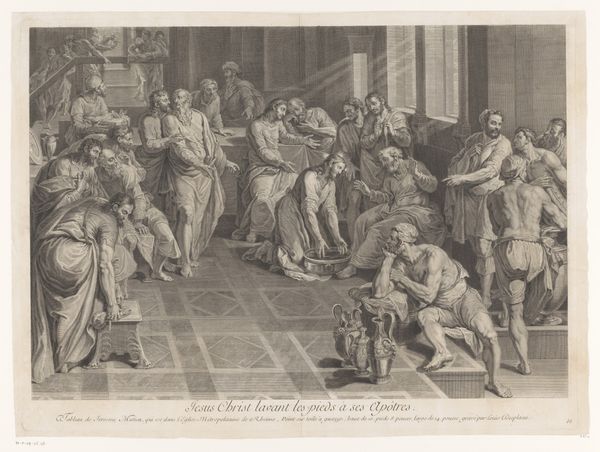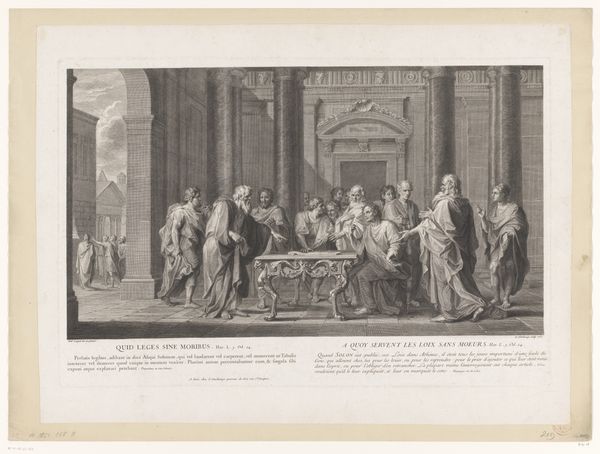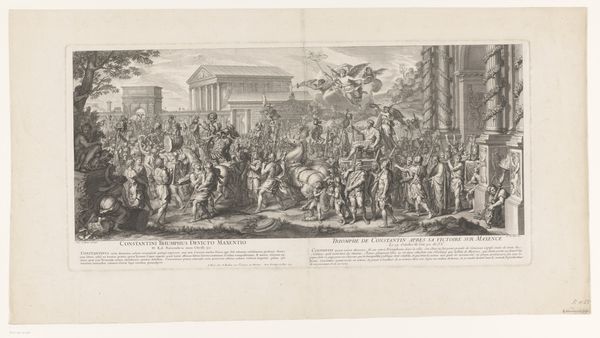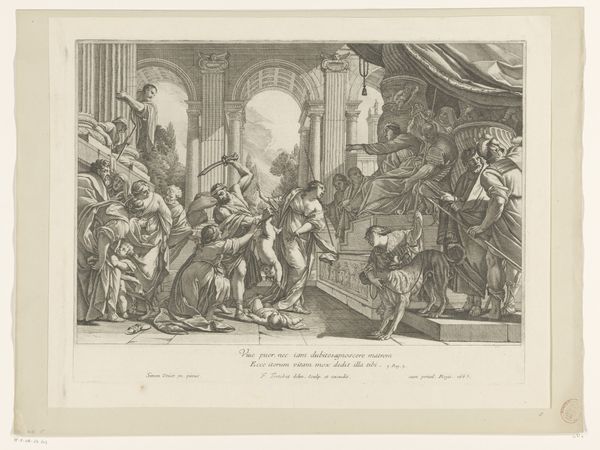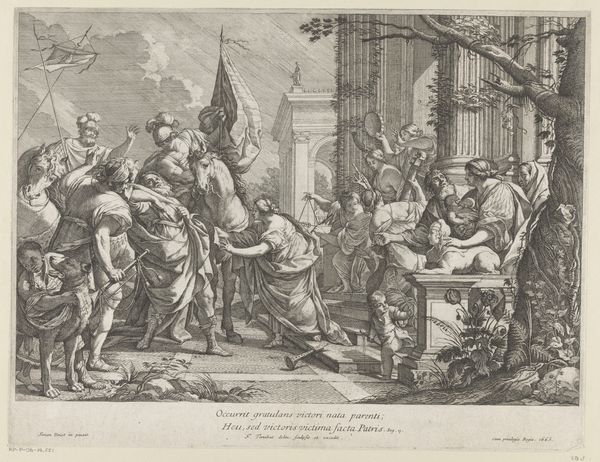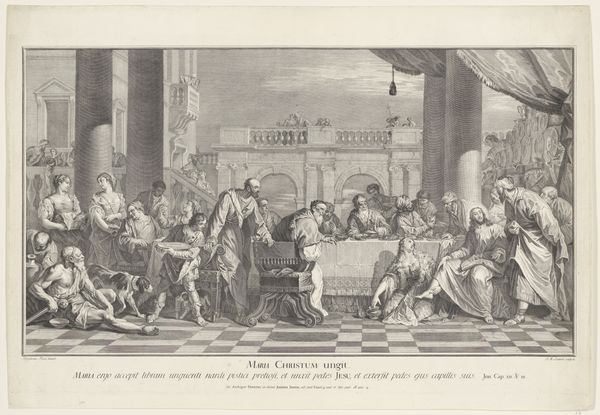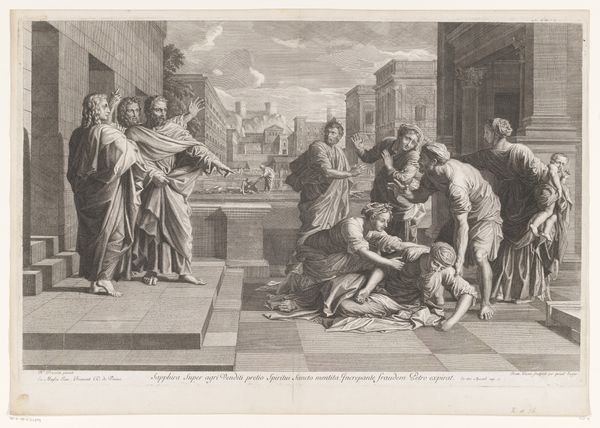
#
picture layout
#
aged paper
#
yellowing background
#
photo restoration
#
parchment
#
archive photography
#
historical photography
#
old-timey
#
yellow element
#
photo layout
Dimensions: height 358 mm, width 542 mm
Copyright: Rijks Museum: Open Domain
Editor: Here we have "Keizer Alexander Severus laat tarwe uitdelen aan het volk van Rome," which translates to "Emperor Alexander Severus Distributing Grain to the People of Rome." It was created around 1717 by Charles Dupuis. It looks like an engraving or etching. It seems to depict a scene of generosity and civic duty, but the body language of the people hints at underlying desperation. What symbols strike you when you see this image? Curator: What I immediately notice is the conscious deployment of classical architectural motifs - the columns, the arches, the togas. These weren't just aesthetic choices. Dupuis is invoking the Roman Empire as a cultural touchstone. In doing so, he’s imbuing Alexander Severus with the mantle of legitimate, benevolent authority. How might this resonate with viewers in the 18th century? Editor: It seems like a way to legitimize power by connecting it to a glorified past, but is there a darker side to it? Are we meant to overlook the reasons why the population needs grain in the first place? Curator: Precisely! Look at the figures clamoring for grain. Are they rendered with dignity, or are they caricatures of need? Consider, too, that images like these can serve to naturalize existing power structures. By framing acts of charity as inherent to leadership, they risk obscuring systemic inequalities. The iconographic message, while seemingly benign, implicitly reinforces a social hierarchy. Editor: So, it’s not just a historical snapshot, but a commentary on power and societal roles packaged within classical imagery? It is quite the message to decipher. Curator: Exactly. Visual language is so often loaded. Consider how artists throughout history have deployed similar techniques to shape perception and reinforce ideology. What did you make of the text beneath the image? Editor: Right! It reinforces the idea of a "good prince," emphasizing this act as salvation. This piece shows how images and text can combine to perpetuate a very specific narrative. Curator: And how those narratives, when repeated across time, become deeply embedded in our collective cultural memory. It’s fascinating, isn't it? Editor: Absolutely! It is amazing to understand how much history and political commentary are interwoven in the art from the past.
Comments
No comments
Be the first to comment and join the conversation on the ultimate creative platform.
